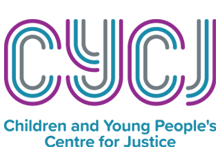The Centre for Youth & Criminal Justice (CYCJ) has produced a seminal paper that reflects on the country’s youth crime and justice scene, 50 years on from the Kilbrandon Report and in the midst of a referendum debate exploring potential improvements for the future.
‘Youth Justice in Scotland: Fixed in the past or fit for the future?’ draws on research evidence, practice wisdom and policy discourse to provide a robust picture of youth justice in Scotland’s past, present and future.
The paper considers how the outcomes of the Kilbrandon Report, described in the paper as ‘a touchstone for practitioners, policymakers, researchers and politicians’ have informed current day policy and practice.
Written by the Kilbrandon Committee in 1964, which was set up to change how society dealt with children and young people in trouble or at risk, the Kilbrandon Report’s recommendation for a national coordinated system of justice and welfare in Scotland has become a successful reality. Its ethos continues to underpin every facet of modern Scottish social work, and has led to the development of the GIRFEC (Getting it right for every child) and Whole System Approach systems.
The paper examines some of the discernible trends in relation to youth offending patterns over the last decade, before moving on to the interplay of politics, policy, research and practice in post-devolution Scotland as they relate to youth justice. It also explores the broader sociological and cultural trends that might account for some of the changes in relation to offending by young people.
In its final section, the paper makes five realistic proposals for change, based on the solid foundations of the past. These include raising the age of criminal responsibility in line with the rest of Europe, holding young people in age appropriate facilities and expanding the Whole System Approach.
Claire Lightowler, Director of CYCJ, said: “In the midst of a referendum campaign and 50 years since the Kilbrandon Report, it seemed an apposite moment to reflect on youth justice in Scotland. This paper explores how youth justice in Scotland has developed since devolution and identifies clear areas where improvements can be made in the future. It is intended to be a starting point for discussion and debate about how to progress youth justice in Scotland. We will be looking to engage with interested parties about the proposals outlined, and we hope the paper will act as a springboard for further action.”
Download ‘Youth Justice in Scotland: Fixed in the past or fit for the future?’

